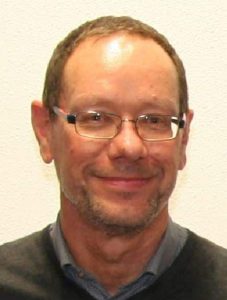[Interview] Trend Towards Remote Maintenance (de-manning) in the Oil and Gas Sector
Frans and Tim are in frequent exchange about the future of the Oil & Gas Industry. On June 26th, 2017, we have published the transcript of their first discussion on our website. You can read the full transcript “Challenges and Trends in the Oil & Gas Industry” here.
Industry Expert Frans Martens, speaks with our Global CSO Tim-Frederik Kohler about current trends in the Oil & Gas Industry
Frans and Tim are in frequent exchange about the future of the Oil & Gas Industry. On June 26th, 2017, we have published the transcript of their first discussion on our website. You can read the full transcript “Challenges and Trends in the Oil & Gas Industry” here.
Tim-Fredrik Kohler:
Hello Frans, it is a pleasure to have back here again. I’m excited to continue our interesting discussion about the future of the Oil & Gas Industry. Last time we have spoken about the Challenges and Trends in the Industry in 2017, I would like to ask you some follow-up questions.
Frans Martens:
Hi Tim, great to be back. Sure, please go ahead.
Remote Maintenance (de-manning)
Tim-Frederik Kohler:
We had some great feedback on the first interview from the industry. That’s where I would like to start with. Back then, you have named as top trends in the Industry a) New non-intrusive measurement technologies, b) effective diagnostic and c) Remote maintenance (de-manning).
I would like to dive a bit deeper into the field of remote maintenance (de-manning) which I believe will include the effective diagnostic as integral part of this concept too. What exactly do you mean with “de-manning”, can you give some examples?
Frans Martens:
One example of an area where de-manning has gone very far is space flight. Take the International Space Station, its first components were launched in 1998. These days it normally holds six astronauts, most of which are scientists performing experiments. Only a few of the astronauts on board actually deal with the mega complex systems on board.
In the early days of space flight the astronauts relied on elaborate ground support systems and a highly trained team of engineers for monitoring and management of system health. However, keeping such an elaborate ground support infrastructure in place for open-ended missions is economically unfeasible. Instead, a system was implemented to continuously monitor the telemetry stream from the ISS, thereby reducing staffing requirements for around-the-clock monitoring.
Such a system should be able to process the alarms, develop a diagnosis, assess problem severity and its potential impact on the mission, look up resolution procedures, and guide the ground support engineer through a troubleshooting process. This method improves response times and provides just-in-time maintenance procedures to the astronauts.
In my opinion, the unique aspect of this example is that all of this was thought out in the late eighties and early nineties when the ISS was being developed and built.
Tim-Frederik Kohler:
That’s a great example. And looking at the aviation industry, costs are being cut by reducing Humans in the cockpit. Let’s see when we will have the first pilotless plane in the air.
Frans Martens:
Exactly, for example in the past aircraft had a radio engineer, a navigator and a flight engineer (air mechanic). Those positions have been replaced by satellite communication, global positioning systems and the aircraft preventive diagnosis services jet engine manufacturers are offering. These services initially focused on the jet engine but have now also been implemented on the air frame and support systems. Most systems on aircraft have been designed in a fault tolerant or redundant way. This design is justified primarily based on safety and not on availability. This allows for some short-term unavailability provided other systems remain operational.
Rolls Royce uses Engine Health Management (EHM) to track the health of thousands of engines operating worldwide, using on-board sensors and live satellite feeds. EHM predicts when something might go wrong, real-time or post-flight, and averts potential threats before it has a chance to develop into a real problem. This allows the airline to make the right decision whether to keep on flying and plan for maintenance later or to take immediate action, thus avoiding failure or damage.
Using these systems allows significant cost reductions on manpower, availability and improved maintenance planning.
The next step might be to replace the co-pilot and pilot and apply fly-by-wire technologies which technically speaking is already possible. The question here is whether we really want to go that far and, if so, what would the passengers think?
Examples in the Oil & Gas Sector
Tim-Frederik Kohler:
Well, being a frequent-flyer myself, I wouldn’t feel very comfortable not having a pilot in the cockpit anymore. So, what do you think, how does this affect the oil and gas industry? Are such concepts already used in – um let’s say – the latest offshore facilities?
Frans Martens:
So far, LNG plants have been land-based and the technology used in those facilities was relying on operators and maintenance crews being available to intervene, when needed. Of course there has always been a strong drive to reduce the manning levels of such facilities.
However, with the launch of the first floating LNG facility, the Shell Prelude FLNG, built in Korea and is now being connected to the off-shore gas wells on the North-Western coast of Australia that has changed.
Manning levels on board are a balancing act between saving money and HSE exposure by de-manning and the cost of the increased levels of automation required.
In theory, it would be possible to completely automate the vessel and all its systems, and have just a few persons oversee everything, a bit like the pilotless plane. The FLNG vessel is designed to have anywhere from 100 to 200 people on board; these will be backed up by more people on shore.
A person on board is paid around three times of what that same person would earn on shore. Being able to delegate monitoring of the equipment and evaluation of the data to an Onshore Support Centre, converting it into actionable information for the operators and technicians on board will save a lot of money.
The ambition should be to have only those activities done off-shore that cannot reasonably be done on-shore. All other activities, in particular problem analysis, planning, work preparation, stock management, bad actor analysis, document control are done on-shore.
This approach requires a comprehensive data communications infrastructure and applications to be in place, together with a distributed organisation that is able to make effective use of it.
Tim-Frederik Kohler:
This is very interesting. This is where I can see many opportunities when it comes to preventive and predictive maintenance for installed products such as Industrial Valves. That’s the Internet of Things, I’m passionate about this topic. For example, we plan to attach sensors to some of our larger Double Block & Bleed Valves so that we can get real time data back from the field. We could analyse the data and potentially predict failure and inform the end-user way ahead. In that way maintenance can be scheduled and preventively conducted. But my personal feeling is that the market is not ready for this kind of services yet. At least when it comes to our products. It might be because of questions like who owns the data, I’m not sure. What do you think about this?
Frans Martens:
The simple fact that something is possible does not mean it is the right thing to do. There may very well be applications in the industry where it is essential to continuously know the position of a particular double block and bleed valve. And to know its condition and be able to predict failures.
Those systems are already widely available on control valves but they are often not used to their full capability. Simply because many valves are simply allowed to ‘run to failure’ before being repaired or replaced. Or because there are so many valves equipped with those systems that the maintenance engineers are overloaded with data and are not able to prioritise on the few critical valves.
That is often caused because EPC’s building the facility treat an item based on what it is, and not based on what it does. So, all control valves get a smart positioner with advanced diagnostics. Not because they should be equipped with one, based on their criticality. But simply because they are a control valve and the process to decide whether they should have one is more costly than the positioner itself.
I would like to mention another aspect of the concept of the Internet of Things. At this moment, the security around anything using data communication, ethernet or even wireless systems is simply insufficient when plant safety is at stake.
Security in the sense of data integrity, availability and confidentiality. When lacking quality or availability of sensor information may impact on plant safety most end-users will only rely on hard-wired discrete or analog signals. And not on the Internet of Things.
That technology may very well be used on more trivial and non-critical information that would allow optimisation of processes and I do believe there is a whole lot to be gained there. But it will take time.
Tim-Frederik Kohler:
At the end, it is all about Total Cost of Ownership. Reduce operational costs by adopting the latest technology and best services available on the market. But in some parts of the world, I still see that companies are mainly focused on reducing immediate costs and not think about the total cost when making purchase decisions. It will take time.
Frans, we are coming already to an end. Time flies, especially when talking to you. But I can see that we have a great topic to cover for our next exchange – let’s dive a bit deeper into the subject of Total Cost of Ownership respectively the value it generates for end-users.
Frans Martens:
This sounds great Tim, let’s do this. Thanks for your time.
Tim-Frederik Kohler:
Appreciated Frans – thanks!

Frans Martens
Frans has 35 years of experience in both the upstream and as well as the downstream parts of a major oil and gas company, working in the Netherlands, Germany and Oman. His knowledge and experience cover field devices, telemetry, process control systems and final elements such as control valves and actuators for on/off valves. Frans has been involved in standardization work, vendor and product acceptance work, the development and delivery of training courses. As of January 2017, Frans is self-employed as an independent consultant to the industry. Frans holds a bachelor’s degree in electrical engineering and telecommunication.
Email: information@fransmartens.nl
(Images source: © pichitstocker/Fotolia + AS-Schneider)

